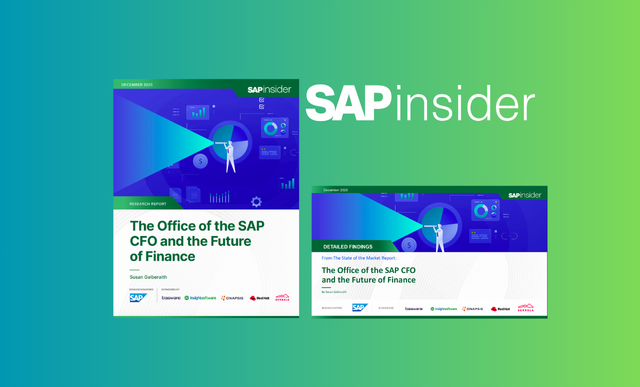SAP Billing and Revenue Innovation Management (BRIM) solution application is commonly used in technology, media, and telecommunications (TMT) industries. But with most big businesses transitioning to “as-a-service”business models post covid pandemic, businesses can leverage SAP BRIM capabilities to develop recurring, pay-per-use, and consumption-based business models. The solution helps to streamline the revenue management process by automating billing, invoicing, and other activities in it. SAP BRIM solution enhances profitability and partnerships, streamline processes, and improves transparency and customer experience.
“As-a-service” subscription-based business - current state
Remote work transitions accelerated by the pandemic have instigated a wave of digital transformation, including a mass shift to the cloud. Cloud computing has changed the way how businesses operate—by outsourcing hardware and software maintenance and support to as-a-service providers. The pay-as-you-go model enables companies to reduce IT costs and still commit to digital transformation in an evolving and competitive marketplace.
Recent technologies across transformative ecosystems are inciting business innovation partnerships through open-source collaboration and offer scalable growth for businesses of all sizes through a community of developers and users that offer mutual support. Today, technology integration is easier through Application Programming Interfaces (APIs) that allow software to communicate through open configuration and flexible code. The result is new solutions in the market and easier access to a range of software products that connect and collaborate with each other. According to
Fortune Business Insights, the global ‘Everything as a service’ (XaaS) market is projected to grow from $545.35 billion in 2022 to $2,378.07 billion by 2029 at a compound annual growth rate of 23.4 percent.
This growth can be attributed to the increased subscription service purchases by businesses involved in transformation initiatives. Notably, the TMT sector experienced significant growth in recent years with high-volume streaming, e-commerce demand, expanded mobile usage, video conferencing, project management, and digital communications needs. Thus, TMT businesses are increasingly adopting such business models for their own revenue management systems. COVID-19 accelerated the need for such products and their revenue management to scale quickly to meet sudden and ongoing demand. Subscription-based business models present a proven solution to scale sustainably. Transitioning to an as-a-service model might seem like a huge transformation effort for enterprise businesses, but for businesses that use
SAP BRIM as their enterprise resource planning (ERP) tool of choice, the process is easier than most may think.
SAP BRIM and its capabilities
SAP BRIM is a modular solution designed to optimize the business lifecycle processes like design, sales, delivery, and billing. It is a comprehensive solution for managing subscription models and regularly recurring revenue sources. With industries experiencing growth and high-volume usage, subscription-based business models are essential for sustainability and scalability. Whether in the TMT industry or in any sector with high-volume product or service transactions, SAP BRIM helps businesses innovate with agility and increased transparency across the entire revenue management process.
SAP BRIM offers a proven framework for a uniform design and pricing model through sales, solution delivery, and solution billing. This improves the ease of adopting a subscription-based business model for improved efficiency and a seamless, high-quality user experience. Core transformative elements of SAP BRIM include the following four components:
- Subscription Order Management (SOM) enables a company to offer business solutions as a bundle or combination of products and services based on recurring fees, usage-based charges, or one-off charges based on a flexible pricing model. It facilitates product bundles and subscription contracts management and partner agreements. SOM also provides flexibility in handling renewals, extensions, and changes to an existing contract.
- Convergent Charging (CC) is an essential component of managing pricing of a service and subsequent charge to the client for the services. Charging and rating capabilities allow companies to invoice the customer with a suitable price derived through charge plans defined in the system. This type of charging system allows businesses to consolidate service charges into a single customer invoice, creating a seamless purchase experience. It also allows service providers to charge users for multiple devices, users, or services at once.
- Convergent Invoicing (CI) builds upon convergent charging and focuses on storage and processing of billable items from both internal and external charging systems and partners. It helps businesses aggregate billable items in one place and one invoice, and allows tracking status of charged and non-charged items to be sent back to convergent charging. This is essential for correct invoice generation for customers who engage with multiple products at different rates, making it easier for them to purchase services frequently.
- Contract Accounts Receivable and Payable allows businesses to manage revenue flow with intelligent, highly automated receivables and payments handling. This provides businesses with a full view of customer financial data, enabling personalized support for credit and collections.
Beyond these core components, SAP BRIM has capabilities to integrate with peripheral solutions like payment portals such as PayPal, data solutions such as Convergent Mediation (CM) by DigitalRoute, or other specialized SAP functions such as SAP Customer Financial Management, SAP Revenue Accounting, and Reporting and SAP Entitlement Management.
Adopting SAP BRIM
As a first step, it is crucial to ensure if a subscription-based model is a suitable fit for product or service offerings, the target market, and for organizational goals. Without a clear alignment between leadership, employees, and customers, revenue management transformation can be an uphill battle. It is important to create a clear strategy that addresses customer needs and meets organizational goals. By understanding how customers interact with a product in the first place, it is possible to identify the ways in which an as-a-service-based model can create better solutions and a seamless buying experience.
Once committed to the transformation, it is essential to articulate the changes to customers so that they know what they are paying for and have information before committing to any significant shift in the cost or way they receive the service or product. With a clear roadmap that articulates how this change will affect the customers, transparently communicating how the changes will affect the customer keeping in mind their experience is important. The same applies to vendors and stakeholders as they want to know how they will be affected. By creating messaging that considers their perspective, partnerships and customer relationships can be strengthened.
Finally, it is important to have the right team in place to implement a cohesive, well-defined approach that communicates and integrates solutions with data management, business operations, and supply management teams. Through this, the revenue management team can identify offerings that resonate with internal teams, stakeholders, and customers and result in a well-planned system that makes purchasing efficient, seamless, and one which provides greater value for the buyer and the business.
A future with superior revenue management
User satisfaction grows with consistent service and a seamless, streamlined user experience. The next generation of subscription-based business models will enable businesses to seek transformation for speed, efficiency, and high-quality user experience. SAP BRIM can provide the ideal framework to help enterprises transform and realize the benefits of an improved revenue management system.









